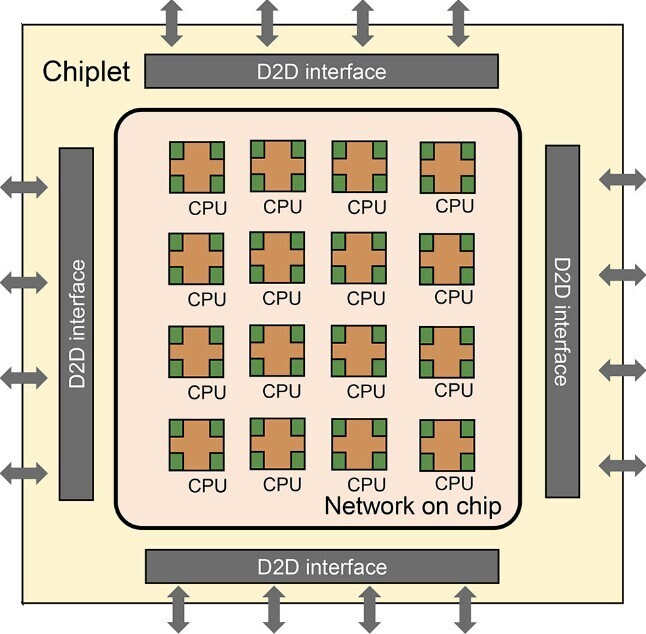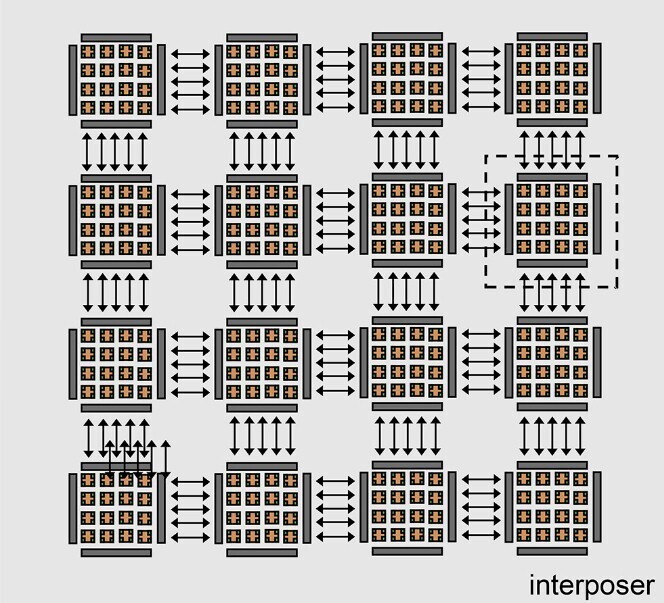According to a report from the journal Fundamental Research, researchers at the Chinese Academy of Sciences' Institute of Computing Technology have developed a 256-core multi-chiplet processor called Zhejiang Big Chip. They plan to scale it up to 1,600 cores by using an entire wafer. As the density of transistors slows down, alternative architectures like multi-chiplet become crucial for continued performance growth. The Zhejiang chip combines 16 chiplets, each containing 16 RISC-V cores, connected via network-on-chip. This design has the potential to expand to 100 chiplets and 1,600 cores using advanced 2.5D packaging interposer. While multi-chiplet architectures are common today, using the entire wafer for one system would be a breakthrough, similar to Cerebras' approach. The researchers believe that exascale supercomputing is an ideal application for massively parallel multi-chiplet architectures.
Software optimization is necessary to balance workloads across the system hierarchy. Integrating near-memory processing and 3D stacking could further improve efficiency. The paper discusses the limits of lithography and packaging, proposing hierarchical chiplet systems as a flexible path to future computing scale. Although there are challenges with yield and cooling that need to be addressed, the 256-core foundation demonstrates the potential of modular designs as an alternative to monolithic integration. China's focus on this technology aligns with similar initiatives from American companies like AMD and Intel for data center CPUs. However, China's semiconductor ambitions add urgency to prove that domestically designed solutions can compete with foreign innovation. While specific performance details are not provided, the rapid progress indicates promise in mastering modular chip integration. Combined with the improvement of domestic nodes like SMIC's 7 nm technology, China has the potential to create a viable Exascale system internally.


